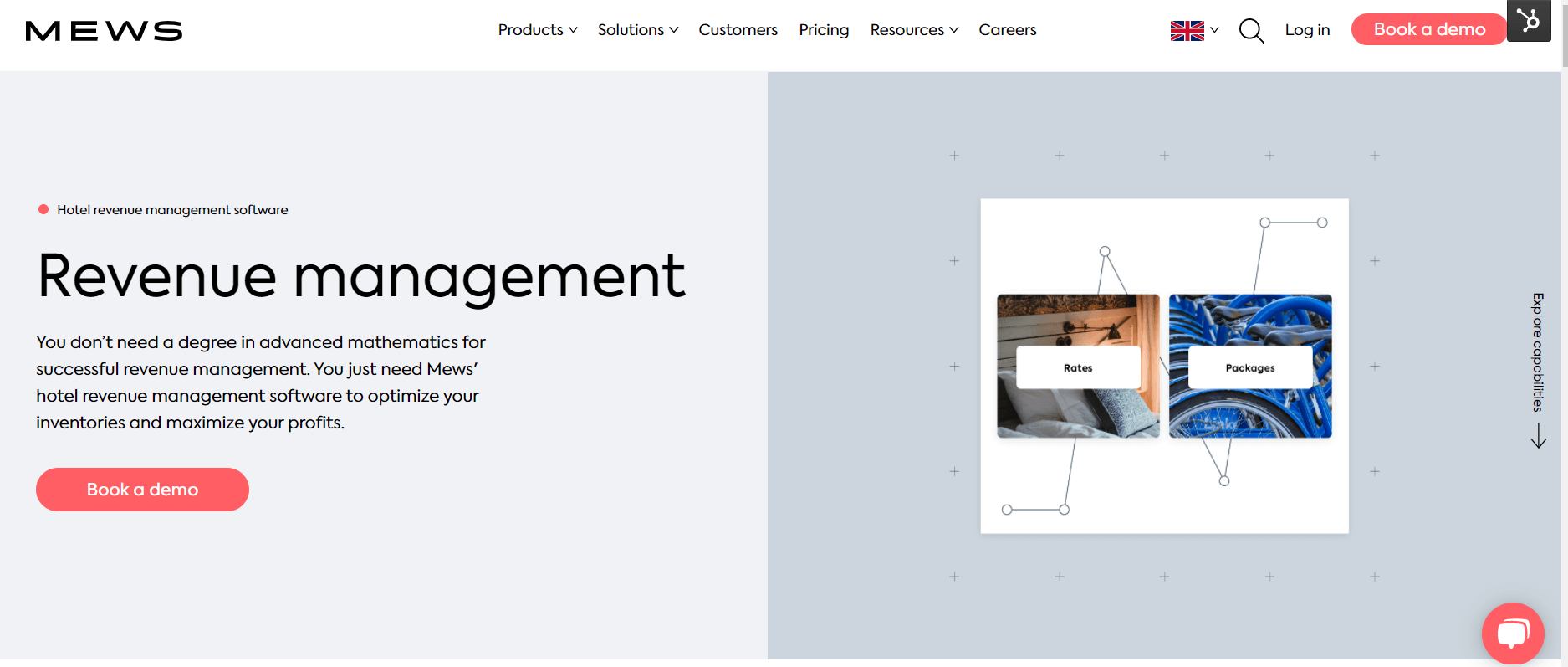Yield management is a pricing strategy used in the hotel industry in order to understand, anticipate and thereby influence consumer behavior with the overall goal of achieving maximum revenue and profit. It is a variable pricing strategy that essentially seeks to ensure that you are providing potential guests with the right price at the right time. In the travel industry, timing is everything, and it can make or break a booking.
Because hotels only have a limited amount of rooms, it’s important to maximize the revenue that can be achieved from those rooms, and this can be done with yield management. We’ll take a look at what this strategy is, why it’s important, how to calculate the formula, and why it’s a good idea to use software to help you manage.
Table of contents
What is yield management?
Yield management is a dynamic pricing strategy used by hotels to maximize revenue. Seeing as hotels have a fixed inventory supply, it’s important to be able to get the most profit out of each room you sell. This variable pricing is a part of revenue management that draws on historical data to make predictions about future demand in order to define rates. Hotels can thereby adjust their prices to meet this demand that will help optimize profitability.
Unlike hotel revenue management, managing yield is about looking at the revenue generated through occupancy and selling price. The fundamental element of this pricing strategy is that depending on demand, the time of year, the number of rooms already sold and other external factors, you can determine at what price you need to sell the rooms in order to maximize revenue.
Learn more about the differences between yield management and revenue management.
Why is yield management important in the hospitality industry?
Yield management is important in the hospitality industry because it allows you to increase revenue and accurately forecast demand. Revenue managers can use data and industry trends to predict demand and accurately price their hotel rooms. Seeing as the formula is calculated based on demand, as long as you practice demand forecasting, you are likely to have a well-informed strategy in place.
Another important aspect is that it allows hoteliers to optimize their pricing strategy and make the most out of the rooms they have available to make the most profit possible. Seeing as the inventory is fixed, this is particularly important in this sector. It ensures that you will have higher revenue regardless if you are at 100% occupancy.
Find out about the advantages and disadvantages of yield management.
How to calculate the yield management formula?
There are many revenue management metrics that can help you understand how well your hotel is performing and give you the opportunity to adjust your strategy and increase revenue, even without increasing your sales.
Nonetheless, this formula is one of the most used formulas in the hospitality industry and is important to calculate to have a baseline metric of how well your hotel is performing.
Calculating the formula is as simple as:
Revenue achieved / maximum potential revenue
Practical example
Let’s imagine your hotel has 25 rooms, and you sell them at $375 a night in mid-season. This would mean that your total potential revenue is $9,375 a day.
Say, for example, you didn’t reach your maximum occupancy one night, and you only sold 15 rooms, of which you grossed $5625. Your yield in this case would be the equivalent of 60% (revenue achieved - $5625 / maximum potential revenue - $9,375).

Other influencing factors
Your yield percentage should be measured in a context where all the surrounding factors are examined, such as how the hotels in your competitive set did in comparison to your hotel on that same night, and other data relating to your compset.
As you can do this exercise in advance, the good news is that you can constantly adapt your prices to meet market trends, spiking the prices when demand increases and lowering your prices or running promotions when demand is low.
A successful strategy takes into consideration a variety of other factors as well, such as measuring whether your hotel reached maximum occupancy with a high room rate. If the answer is yes, keep those prices high because it’s clear that’s how the market is working at the time.
You may also consider historical performance data, the time of year and seasonality, market trends (is your hotel in a trendy area?), and the different factors affecting your guest profiles.
For example, if your hotel or destination caters to international guests, keep important external factors in mind. If there are certain economic surpluses at certain times of the year, you might expect more guests from a particular region.
International guests are particularly interesting for hotels because since they are traveling longer distances, they tend to save up and book longer stays. They are also more likely to spend money on extra services, which can positively impact your revenue per booking.
Why should you use yield management software?
As in any aspect of the hotel industry, software is key to automating processes, streamlining operations, and implementing more scalable procedures.
With software that allows you to create your own rates and rules like Mews’ rate management software, you can customize rates and rules according to market demand and include special deals. The tool is flexible and allows you to grow, making it an important element of your pricing strategy.
Such software in general helps you to determine effective pricing and to better allocate your inventory to reach more guests on a daily basis. You can monitor closely and make real-time adjustments based on the conditions of the market that will help you reach more clients because you have better information on what they are willing to pay, and you can plan accordingly.

Conclusion
In this article we’ve looked at managing yield, why it’s beneficial, how to calculate the formula, and how to use software to help you.
Managing yield is fundamental to gain important data that will help you make decisions about your pricing tactics and to better understand the dependencies surrounding the decisions you make. With the right hotel management software, you can make your own rate rules that allow you to grow more easily by having competitive rates.
Market trends, your compset, seasonality and a wealth of factors can affect your yield percentage, but by using this data to make better informed decisions you can improve profitability and maximize profits. This strategy can unlock the key learnings needed to make important choices that will ultimately affect your bottom line.
Want to know which essential revenue management metrics you should be tracking?
Download our guide "The New Era of Hospitality Metrics for Revenue Managers"


2026 Hospitality Industry Outlook
Download now
Table of contents
Hospitality hot takes straight to your inbox



.webp)
